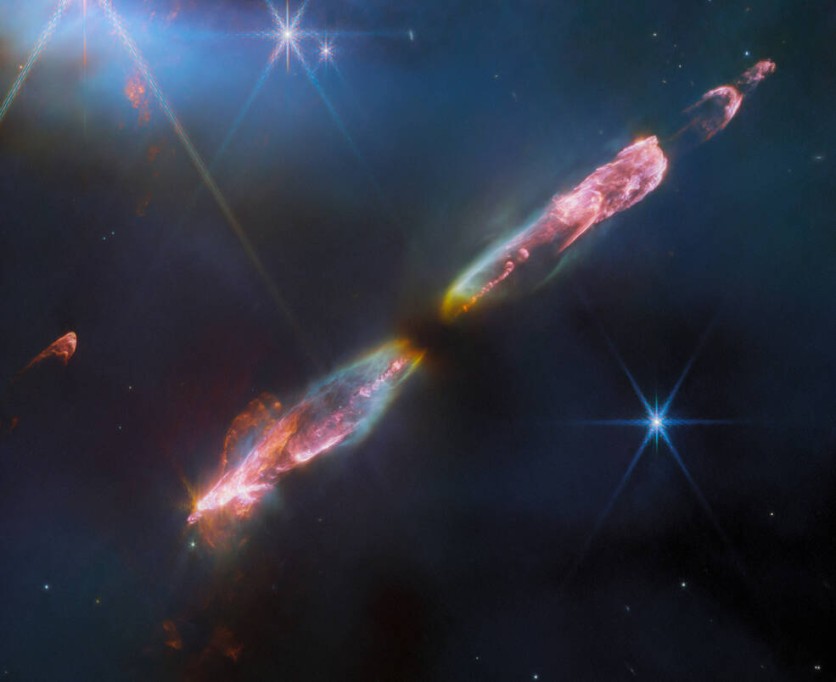Who knew a star's outflow could be this cinematic? NASA's James Webb Space Telescope has unveiled a mesmerizing view of Herbig-Haro (HH) 211, offering a high-resolution, near-infrared snapshot of the young star's supersonic outflow.
This celestial display serves as a parallel to the early stages of our own sun's existence. Herbig-Haro objects materialize when the forceful winds or jets of gas emanating from nascent stars generate shockwaves upon colliding with nearby particles of gas and dust at remarkable velocities.
The image lays bare a sequence of bow shocks in the southeast and northwest, along with the slender bipolar jet propelling them, all captured with unprecedented precision.
Molecules stimulated by the turbulent conditions, including molecular hydrogen, carbon monoxide, and silicon monoxide, emitted infrared light and were meticulously recorded by Webb, creating a detailed map of the outflows.

NASA on Youthful Counterpart of the Sun
This image of HH 211 from NASA's James Webb Space Telescope exposed an outflow from a Class 0 protostar, a youthful counterpart of our sun when it was over a few tens of thousands of years old, possessing a mere 8% mass of the current sun.
However, it is projected to eventually grow into a star like the sun. Infrared imaging proves instrumental in scrutinizing nascent stars and their ensuing outflows, given that such stars invariably remain enshrouded within the remnants of the molecular cloud from which they originated.
The Herbig-Haro object HH 211 proves to be an excellent candidate for scrutiny with Webb's finely tuned infrared instruments as the infrared emissions pierce through the shrouding veils of gas and dust. It provides a clear view of the object's intricate outflow structure.
The energetic environment also prompts the emission of infrared radiation from molecules like molecular hydrogen, carbon monoxide, and silicon monoxide, which Webb adeptly captures.
In this image, a series of bow shocks in the southeast (lower-left) and northwest (upper-right) are prominently featured, all set in motion by the slender bipolar jet.
Bow Shocks
NASA's James Webb Space Telescope's image offers unprecedented detail, surpassing previous depictions of HH 211 by approximately 5 to 10 times in spatial resolution.
Notably, the inner jet exhibits a mirrored oscillation on both sides of the central protostar, suggesting the potential presence of an unresolved binary star system. Earlier ground-based observations of HH 211 revealed expansive bow shocks receding in the northwest and approaching in the southeast.
The researchers established that the innermost outflow structures move at speeds ranging from 48 to 60 miles per second (80 to 100 kilometers per second). However, the difference in velocity between these segments of the outflow and the oncoming shockwave is considerably less pronounced, according to NASA.
This finding led the researchers to posit that outflows from nascent stars, much like the one central to HH 211, are predominantly composed of molecules. The relatively modest velocities of the shockwaves lack the intensity needed to break down these molecules into more elemental atoms and ions.
Related Article : Ring Nebula Comes Into Focus: NASA's James Webb Space Telescope Unveils Remains of a Dying Star in Stunning Detail





